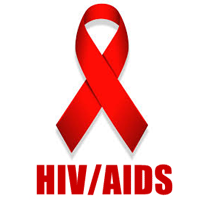ASHENEWS reports that the United Nations Children’s Fund (UNICEF) says that about 98,000 adolescent girls aged 10 and 19 years of age were infected with the Human Immunodeficiency Virus (HIV) globally in 2022.
The UNICEF stated this in a statement issued on Friday to commemorate the World AIDS Day 2023.
According to the statement, the figure emanated from its global snapshot of children with HIV and AIDS.
In sub-Saharan Africa, UNICEF said that HIV prevalence among adolescent girls and young women, aged 10-24 years, is persistently over three times higher than among their male counterparts.
“Girls continue to bear the brunt of the HIV epidemic due, in part, to gender inequalities which often result in girls being disempowered to negotiate safe sex; poverty that manifests in communities being located far from healthcare centers; and a lack of access to HIV prevention and sexual and reproductive health programs.
“The latest data shows that Eastern and Southern Africa continues to carry the overwhelming burden of HIV infection, with 137,000 new infections among the 0-19 age group in 2022, followed by West and Central Africa (66,000 new infections among 0-19), East Asia and the Pacific (21,600 new infections 0-19), Latin America and the Caribbean (16,300 new infections 0-19) and South Asia (14,400 new infections 0-19).”
The Global Snapshot further highlights how children and young adolescents face considerable inequities when it comes to access to treatment, compared to adults.
“Globally, nearly one million people aged 0-19 living with HIV are not receiving treatment, and more than half of this group – about 60 percent – are in Eastern and Southern Africa.”
The statement said that with the lack of age-appropriate antiretroviral drugs for younger age groups, only 57 percent of younger children aged 0-14 are receiving antiretroviral medications.
It also identified the cumbersome diagnostic processes for children; specific testing requirements for infants that are not always available in middle- and lower-income countries;
“Progress toward ending AIDS remains slow, with 99,000 children and adolescents aged 0-19 years dying globally due to AIDS-related causes in 2022, accounting for 15 percent of all AIDS-related deaths, even though this age group comprises just 7 percent of people living with HIV,” it said.



